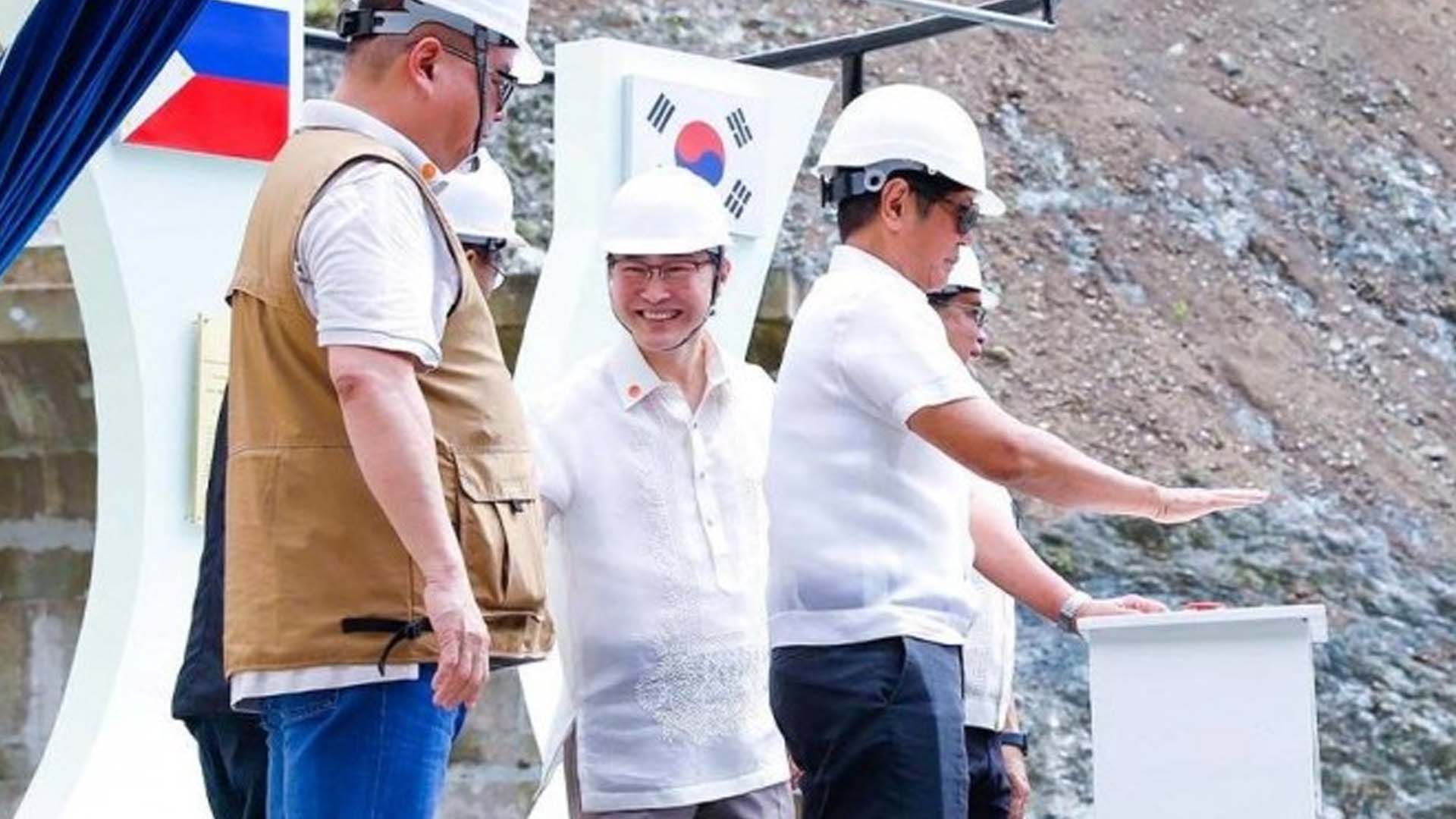The newly inaugurated phase 2 of the Jalaur dam project in Iloilo is expected to boost rice production and help supply power on Panay Island, President Ferdinand R. Marcos Jr. said Tuesday.
Marcos led the inauguration of the Jalaur River Multipurpose Project-Stage II (JRMP-II) at Calinog, Iloilo together with a number of dignitaries, including the Korean Ambassador to the Philippines Lee Sang-hwa.
The PHP19.7 billion JRMP-II is the first large-scale water reservoir outside Luzon, consists of a 109-meter high dam, a 38.5-meter afterbay dam, and an 80.74 kilometer high line canal capable of providing irrigation, bulk water supply, and hydroelectric power, among others.
This project will expand the National Irrigation Administration’s (NIA) service area by 9,500 hectares and benefit around 25,000 farmers with uninterrupted irrigation water supply.
“This should boost further the development in the agricultural sector as well as the local economy of the entire region,” Marcos said.
“In fact, it is estimated to help increase annual rice production in Region 6 by 160,000 metric tons, which is almost 20 percent of the region’s annual rice requirement.”
On top of irrigation, Marcos said a portion of the water from the high dam’s reservoir, or 86 million liters per day, would be used to supply the commercial and industrial bulk water requirements of Iloilo City and its neighboring municipalities.
Marcos also highlighted the at least 6.6 megawatts of hydroelectric power it will generate to supplement the power supply on Panay Island.
The project, he said, also paves the way for future development of inland fishery, floating solar energy systems, and eco-cultural tourism in the area.
“With all [of] these, the JRMP II truly deserves its label: Katuwang sa Kauswagan or Partner in Progress. Let this project serve as a benchmark and an inspiration for all endeavors of this scale and of this magnitude,” Marcos said.
“It’s only the beginning of what we have in store for the development of our water resources,” he added.
Marcos also promised Filipino farmers that the administration would continue pushing for similar projects strengthening the agriculture sector.
“Hindi ko rin maaaring kalimutan ang mga magsasaka na araw-araw ay nagsisikap upang magbigay ng pagkain sa buong sambayanan. Hindi kami titigil sa pagpapatupad ng mga proyekto at programa na tutugon sa inyong mga pangangailangan at [magpapagaan] sa inyong buhay (I cannot forget the farmers who toil daily to provide food to our country. We will not stop pursuing projects and programs that will respond to your needs),” he said.
“Mananatiling kasangga ninyo ako at ang buong administrasyong ito sa pagtupad ng inyong mga pangarap (You can rely on me and the entire administration as you reach your goals),” he added.
Strategic development
Under the administration’s vision of a “Bagong Pilipinas,” Marcos said the government would also be strategic in harnessing the country’s resources, especially water.
“We are also wisely investing our limited funds in projects that would bring optimal development for the most number of beneficiaries in the most efficient manner,” he said.
“Our water development projects would not just bring irrigation or potable water to our people, but will also help address flooding, produce food, generate electricity, and develop tourism activities,” he added.
The JRMP was initiated in 1960 through Republic Act (RA) No. 2651, with its first stage completed in 1982.
The JRMP-II, which was funded through a grant from the South Korean government and an equity from the Philippine government, is expected to be fully operational in mid-2025.
In a separate speech, Lee conveyed Korea’s continuous support of the Philippines’ food security and resilience to climate change through its official development assistance (ODA).
“Food security and climate change are among the five priorities of the Korean ODA to the Philippines,” he said.
“As the largest project, Jalaur River Project will enable a structured response to climate change benefitting many Filipinos. Its year-round irrigation will substantially increase food production, bolster agricultural productivity, and provide a substantial livelihood for Filipino farmers and communities,” he added.
The South Korean government provided the grant through its Economic Cooperation Development Fund (ECDF), with Korean construction firm Daewoo Engineering and Construction implementing the project.
Of the total project amount, South Korea provided USD208 million or about PHP12 million through its ECDF, while the Philippine government contributed USD52 million or approximately PHP3 billion.
Iloilo as top rice-producing province
Meanwhile, Iloilo Governor Arthur Defensor Jr. said the irrigation services of JRMP-II will be the key for the province to regain its spot as the top rice producer in the country.
“Several years ago, Iloilo was the number one rice-producing area. Pototan was the number one rice-producing municipality, and we want to regain that,” Defensor said in an interview on the sidelines of the project inauguration.
In 2023, the province produced 888,079 metric tons, making it the fifth-largest rice-producing province in the country.
Defensor said the province is initially eyeing a very modest target of six metric tons per hectare.
“We want to be a major contributor to the food security of the country,” he said.
Farmers and irrigators associations expressed their gratitude to the Marcos administration.
Vicente Alave, president of Barangays Pajo, Quiling, and Jorog (PORQUIJO) Farmers Association, said the dam would benefit their over 150 members tilling a total of around 15 hectares.
“We are very thankful because this could greatly help us farmers. We expect high yield, even double our current production of barely 100 sacks in one hectare,” he said in the local dialect.
Ruben Cerbo, president of the Lampaya, Guiso, and Canabajan (LAMGUICAN) Irrigators Association in Calinog, said they are “very excited” because they would now be assured of good yield even during the dry season.
He said their average production of 60 sacks per hectare can reach a maximum of 200 sacks if there is sufficient irrigation.
Cerbo said another major impact of the project is the gradual change in the mindset of farmers, as more of them are now starting to cooperate and join various activities related to agriculture. (PNA)







